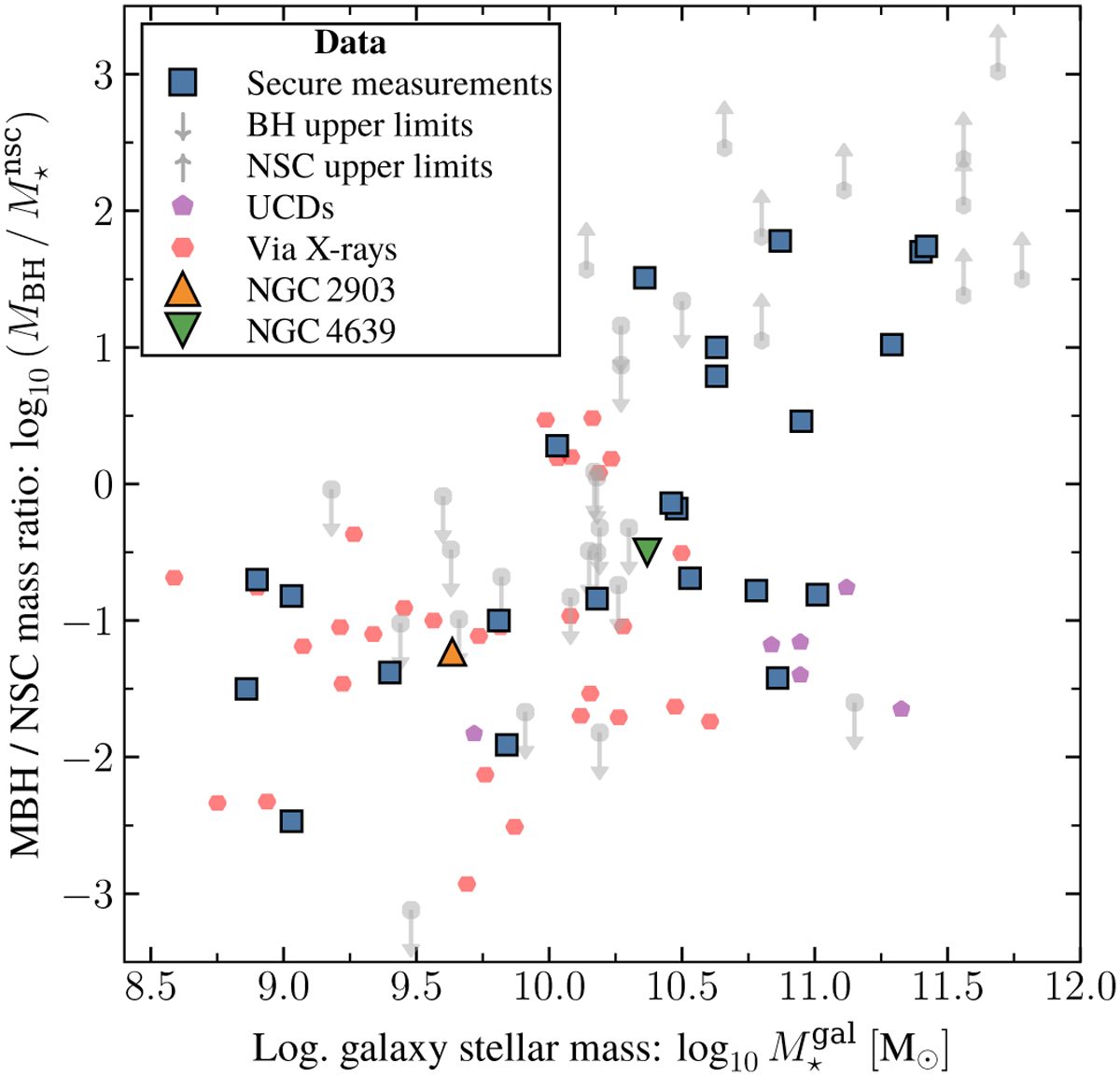Fig. 7

Download original image
Mass ratio of the SMBH and NSC stellar mass (log10 ![]() ) versus the host galaxy stellar mass. We show the compiled data of Neumayer et al. (2020) and add to that data for NGC 1336 (Sáulder et al. 2016; Fahrion et al. 2019; Thater et al. 2023), NGC 3593 (Bertola et al. 1996; Nguyen et al. 2022), and four galaxies from Ashok et al. (2023), all shown with blue squares. The sample of ultra-compact dwarf galaxies (UCDs, purple pentagons) include the compilation of Neumayer et al. (2020) and the additional B023-G078, M 31’s most massive globular cluster, from Pechetti et al. (2022). We estimate the most likely previous UCD’s host galaxy mass using the
) versus the host galaxy stellar mass. We show the compiled data of Neumayer et al. (2020) and add to that data for NGC 1336 (Sáulder et al. 2016; Fahrion et al. 2019; Thater et al. 2023), NGC 3593 (Bertola et al. 1996; Nguyen et al. 2022), and four galaxies from Ashok et al. (2023), all shown with blue squares. The sample of ultra-compact dwarf galaxies (UCDs, purple pentagons) include the compilation of Neumayer et al. (2020) and the additional B023-G078, M 31’s most massive globular cluster, from Pechetti et al. (2022). We estimate the most likely previous UCD’s host galaxy mass using the ![]() relation of Neumayer et al. (2020) for massive galaxies (their Eq. (2)). Additionally, we add nucleated galaxies with significant X-ray excess, hinting at the existence of a massive black hole, by using a black hole mass estimate from She et al. (2017) and NSC mass estimates from Georgiev et al. (2016), shown with red hexagons. We add to this last group the data points of NGC 2903 and NGC 4639, which could host massive black holes based on their X-ray variability (see Fig. 6) with an orange and green triangle, respectively.
relation of Neumayer et al. (2020) for massive galaxies (their Eq. (2)). Additionally, we add nucleated galaxies with significant X-ray excess, hinting at the existence of a massive black hole, by using a black hole mass estimate from She et al. (2017) and NSC mass estimates from Georgiev et al. (2016), shown with red hexagons. We add to this last group the data points of NGC 2903 and NGC 4639, which could host massive black holes based on their X-ray variability (see Fig. 6) with an orange and green triangle, respectively.
Current usage metrics show cumulative count of Article Views (full-text article views including HTML views, PDF and ePub downloads, according to the available data) and Abstracts Views on Vision4Press platform.
Data correspond to usage on the plateform after 2015. The current usage metrics is available 48-96 hours after online publication and is updated daily on week days.
Initial download of the metrics may take a while.


